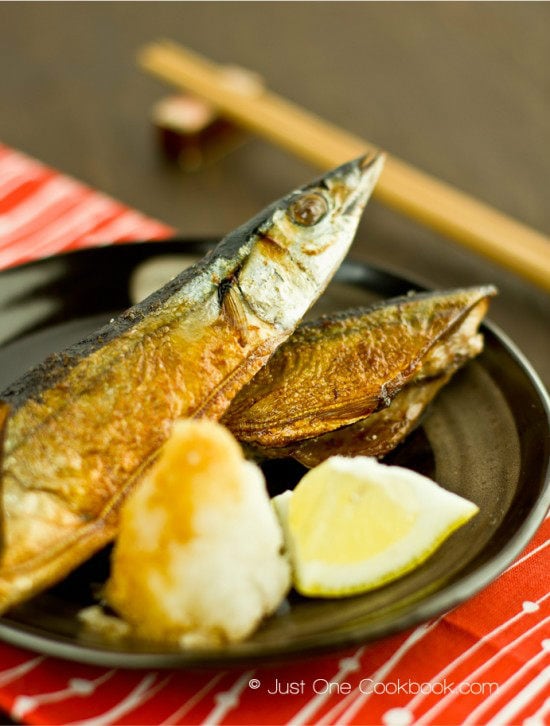
Sanma or Pacific Saury is one of the most well-known seasonal fish representing autumn in Japanese cuisine. It’s usually salted and grilled whole even with intestines intact, and served with grated daikon and soy sauce to intensify the flavor of the fish. The Japanese enjoy the combination of the bitter intestine flavor with fresh grated daikon soy sauce. The kanji characters used in the Japanese names of the Sanma (秋刀魚) mean “autumn sword fish” in reference to sanma season and its body shape resembling a knife or a sword.
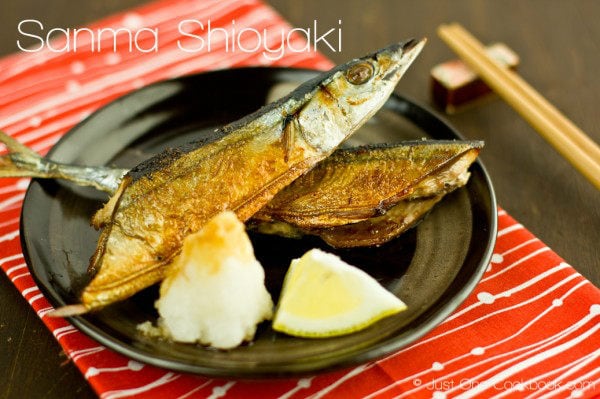
If you can grill sanma over charcoal, the smokiness adds another layer of flavor to the dish. However, I like using my oven toaster to grill my fish because it’s simple and easy to clean up. You can use an oven or a broiler, but please adjust the cooking time accordingly. I will be sharing another Sanma dish next week before the sanma season is over. This time I wasn’t scared to show fish head picture. Do you remember my post that I was concerned about publishing because I thought it’s scary looking? Well I received very positive responses last time from majority of readers who are used to fish heads so I am more confident this time to share the photos today. I hope I didn’t scare you this time… Have a great week everyone!
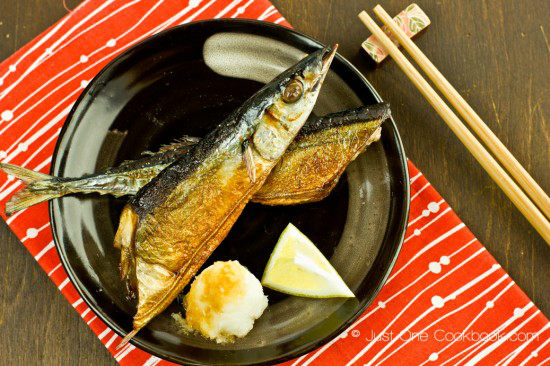
Wish to learn more about Japanese cooking? Sign up for our free newsletter to receive cooking tips & recipe updates! And stay in touch with me on Facebook, Pinterest, YouTube, and Instagram.
Sanma Shioyaki (Salt-Grilled Pacific Saury)
Ingredients
- 1 Pacific saury (sanma)
- 1 Tbsp sake
- Diamond Crystal kosher salt
- 1 inch daikon radish (peel and grate it (I like this grater) and squeeze out some of the moisture; you don‘t need to use all of it)
- 1 Tbsp soy sauce
- 1 wedge lemon (optional)
Instructions
- Cut 1 Pacific saury (sanma) in half diagonally (to fit in my toaster oven). Place the fish vertically on the cutting board and insert a knife in the stomach side from top to bottom. Wash and get rid of the guts thoroughly in cold water. Wipe the entire fish dry with paper towels.
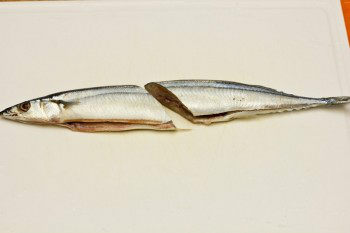
- In a bowl, put the fish and 1 Tbsp sake and leave it for 5 minutes. Sake helps to make the fish fluffier and to remove the unwanted odor.
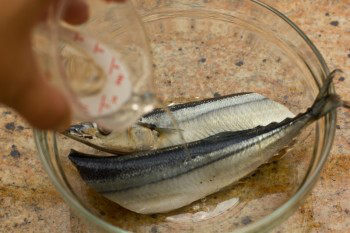
- After 5 minutes, remove the moisture on the fish with paper towels. Right before broiling or baking, sprinkle both sides of the fish with Diamond Crystal kosher salt.
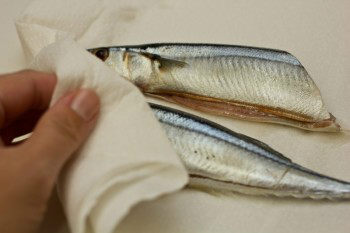
To Broil (Recommended)
- Preheat the broiler* with a rack placed about 6 inches (15 cm) away from the top heating element (in the middle) for 3 minutes. Line a baking sheet with foil for easy cleaning (brush/spray the foil with oil or wrinkle up the foil so the skin doesn‘t stick). Place the fish on the baking sheet. Broil it on Medium/High until the surface is blistered and brown a bit, about 8–10 minutes, flipping once. *Typical broiler setting: Low 450ºF/232ºC, Medium 500ºF/260ºC, and High 550ºF/288ºC.
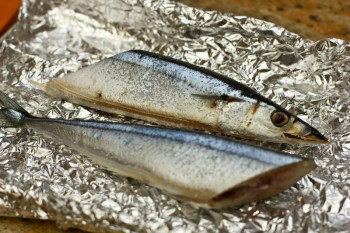
To Bake (Optional)
- Preheat the oven to 425°F (218ºC) with a rack placed in the middle and bake the fish on parchment paper until the surface is blistered and brown a bit, about 10–15 minutes, flipping once.
To Serve
- Serve with a 1 wedge lemon and the grated daikon from 1 inch daikon radish. Drizzle 1 Tbsp soy sauce over the grated daikon and enjoy it with the fish.
To Store
- You can keep the leftovers in an airtight container and store in the refrigerator for up to 2 days.
Nutrition
Did you make this recipe?
Tag @justonecookbook on Instagram so we can see your delicious creation!


